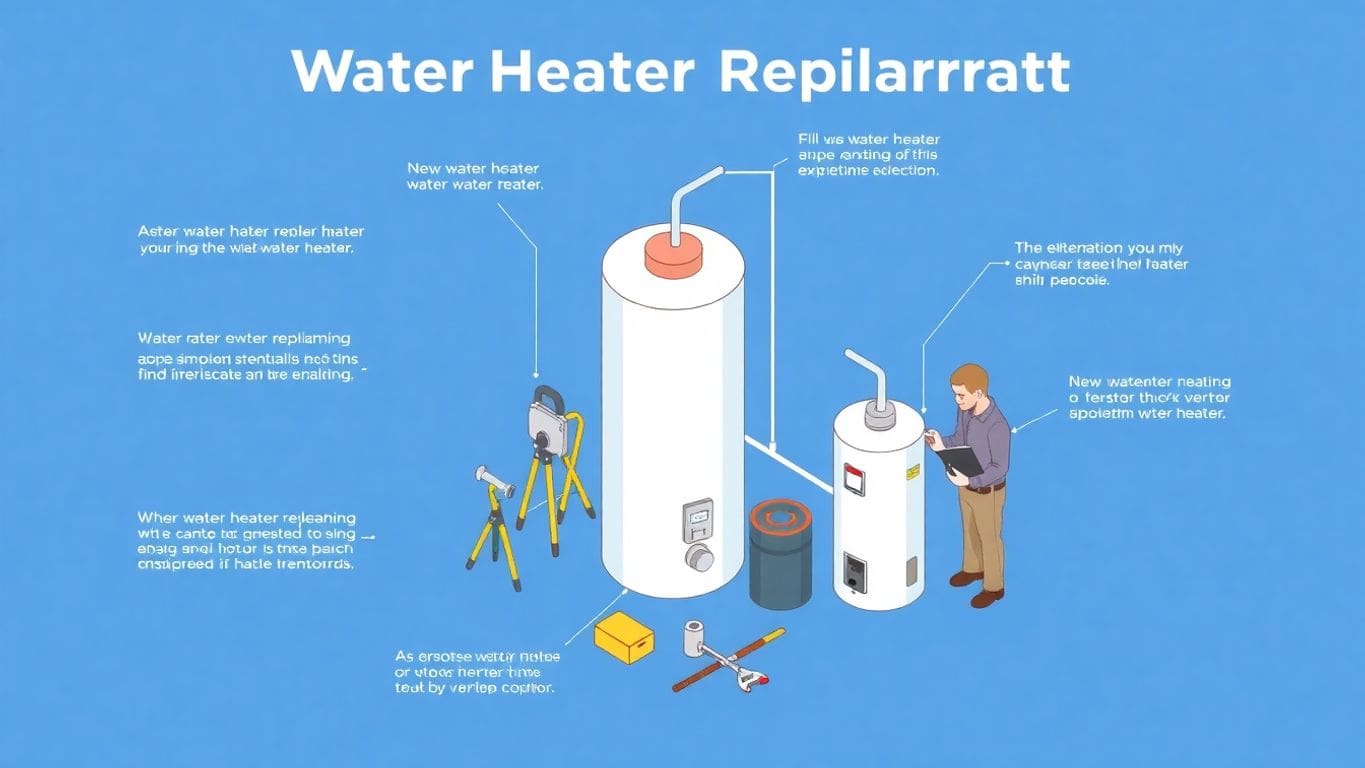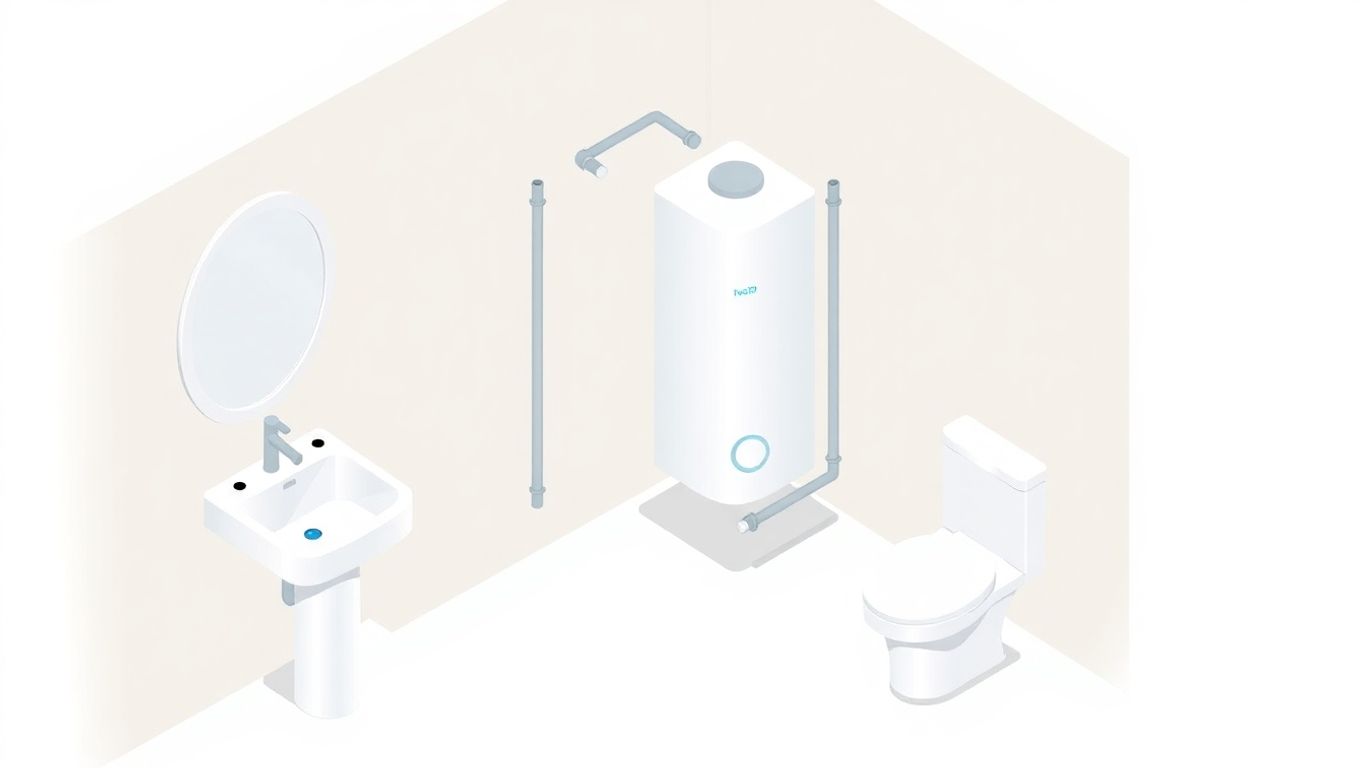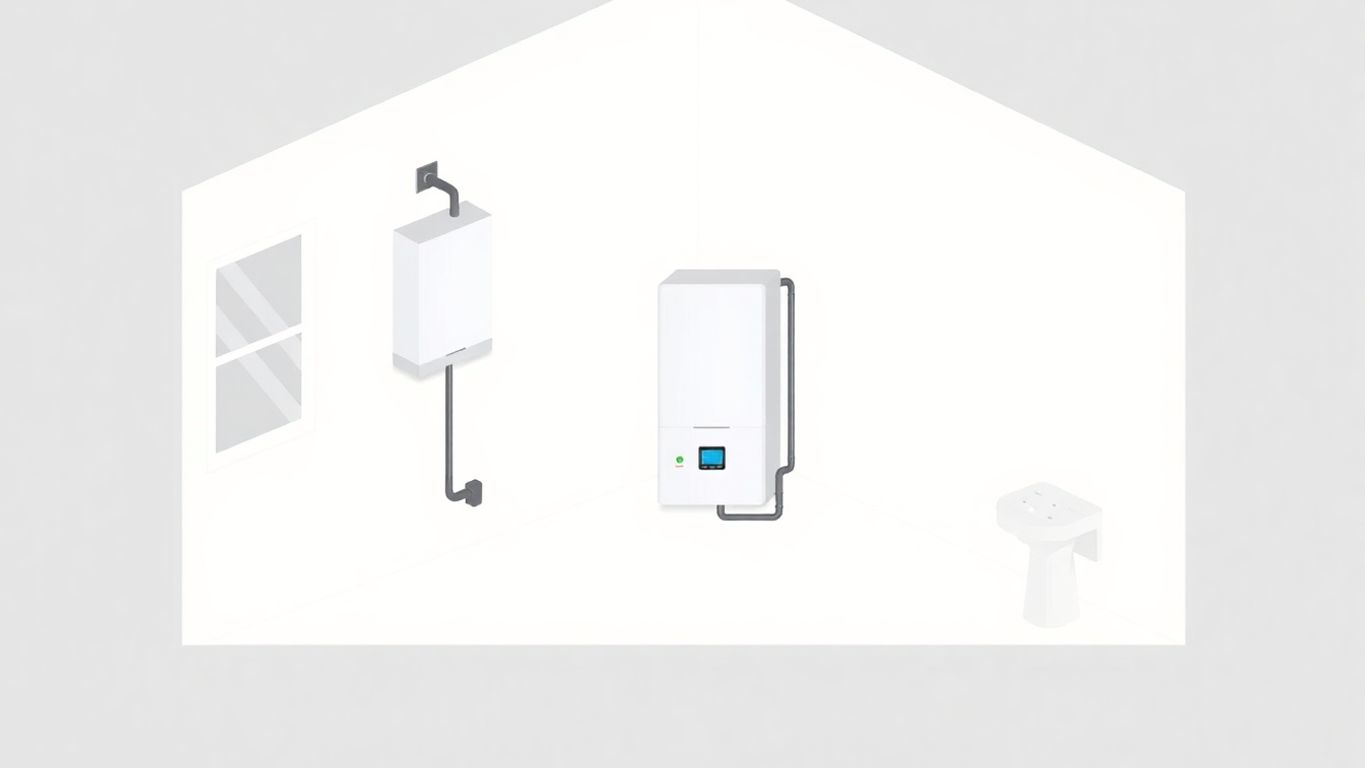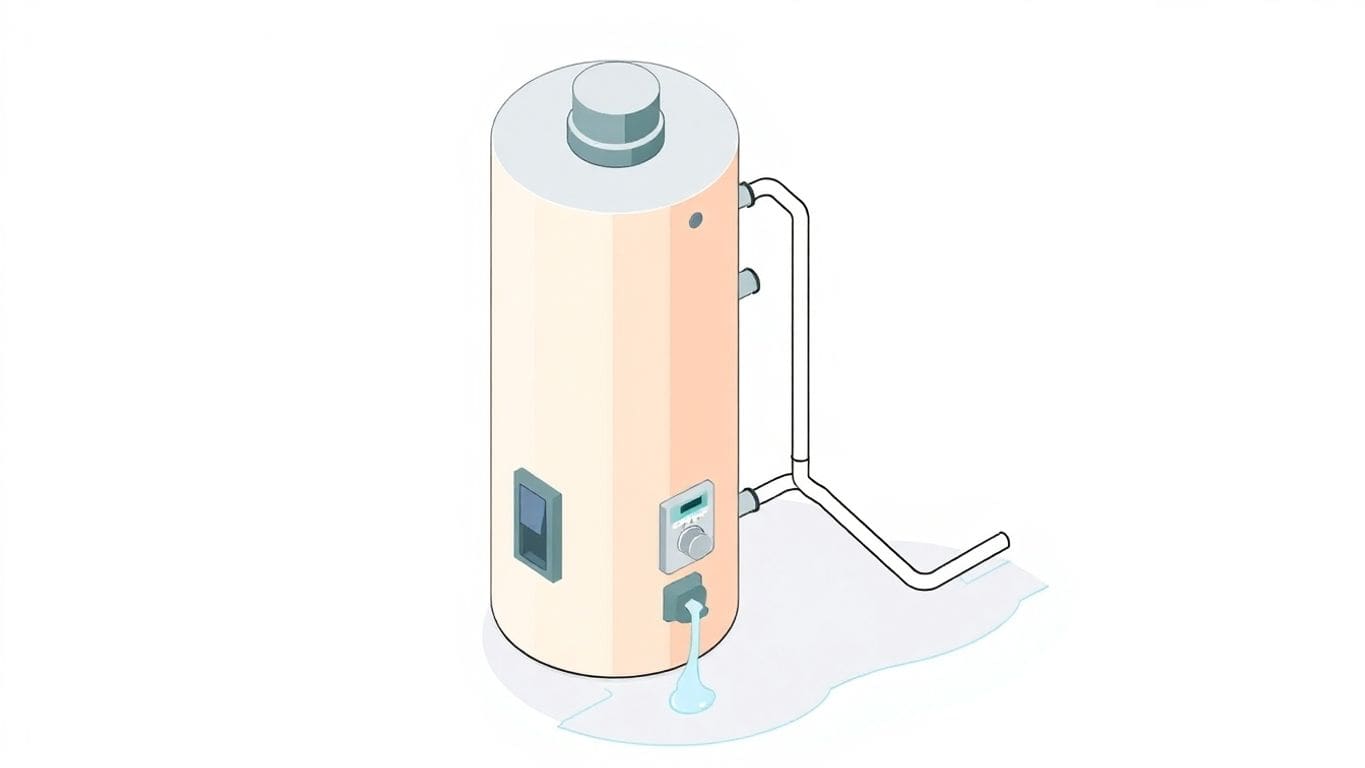
Thinking about where to install a tankless water heater? It’s not just about picking a spot and calling it a day. You gotta consider a bunch of stuff like plumbing, electrical systems, and even where your water sources are. This guide breaks it all down for you, from the basics of how these heaters work to the nitty-gritty of installation and maintenance. Whether you’re going DIY or hiring a pro, we’ve got the info you need to make sure your tankless water heater is set up for the best performance.

Tankless water heaters are like magic for your water supply. They heat water only when you need it. No big tank sitting in your basement or garage. Instead, when you turn on the hot water tap, cold water travels through a pipe into the heater. Inside, a gas burner or an electric element heats the water right away. This means you get hot water on demand, without waiting for a tank to fill up and heat. It’s fast and efficient!
Switching to a tankless water heater comes with a bunch of perks:
Some folks think tankless water heaters are super expensive or complex to install. But that’s not always the case. Here are a few myths:
Tankless water heaters are a smart choice for those looking to modernize their homes. They offer convenience, efficiency, and savings over time. It’s like having a hot water tap that never runs dry.

Picking the right spot for your tankless water heater is pretty important. You want it to work well and be easy to take care of. Here are some things to think about:
Tankless water heaters can go inside or outside. Here’s a quick look at the pros and cons:
Having the heater near your water sources is smart.
Choosing the right spot for your tankless water heater makes a big difference. It affects how well it works and how easy it is to keep in good shape. Think about where you’ll put it before you start the installation.
When you’re setting up a tankless water heater, your home’s plumbing is super important. You need to make sure your water pipes are the right size and in good shape. Sometimes, you might need to replace or insulate them to handle the new system. If your pipes are old or too small, they could cause problems.
For an electric tankless water heater, your electrical system needs to be ready. These heaters use a lot of power, so your home’s electrical panel might need an upgrade. Check if there are enough circuits available and if your panel can handle the extra load.
If you’re going with a gas-powered heater, you’ll need to focus on your gas lines and venting. Gas heaters require proper venting to avoid any dangerous gases from building up. Your gas lines must be able to handle the flow and pass safety tests.
Taking the time to assess and improve your home’s infrastructure now can save you headaches later. A well-prepared home means your tankless water heater will work efficiently and safely.
For more on keeping your water heater in top shape, check out our regular maintenance tips.
Before you start, gather all the tools and materials you’ll need. Having everything ready makes the job smoother and less stressful. Here’s a quick list:
Safety first! When installing a tankless water heater, follow these precautions:
Installing a tankless water heater isn’t just about getting hot water. It’s about doing it safely and correctly to avoid any mishaps.
Local building codes can vary, so it’s crucial to understand the requirements for your area. These codes ensure that your installation is safe and legal. Some things to consider:
Following these guidelines not only keeps you safe but also helps your heater work efficiently. If you’re unsure, consulting a professional is always a good idea.
When you hire a professional to install your tankless water heater, you’re tapping into a wealth of experience. These experts know all the ins and outs of the job. They ensure everything is set up right the first time. This means fewer headaches for you down the road. Professionals handle tricky tasks like gas connections and venting with ease. Plus, they make sure everything meets local building codes. You get peace of mind knowing your heater is safe and efficient.
Thinking about going the DIY route? It can save you some money upfront. But, be ready to invest time and effort. Here’s what you need to know:
If you’re handy and enjoy a challenge, DIY might be for you. But remember, mistakes can be costly.
Sometimes, it’s best to leave it to the pros. Here are signs you should call a professional:
A professional can save you time and ensure everything is done right. If you’re not 100% confident in your skills, hiring a pro is a smart choice.
In the end, whether you go DIY or hire someone depends on your comfort level and the complexity of the job. For more detailed guides on installing various types of water heaters, including tankless models, check out our comprehensive guides for homeowners.
Keeping your tankless water heater in top shape is key. Regular maintenance ensures it works efficiently. Here’s what you should do:
Sometimes things don’t go as planned. Here are some common problems and how to fix them:
To get the most out of your tankless water heater, consider these tips:
Installing a tankless water heater is a smart choice. It’s efficient, saves energy, and gives you hot water when you need it. But remember, regular care and smart usage can make it even better.
For more on how upgrading your old water heater can enhance comfort and reduce energy bills, consider exploring different models like tankless systems. They offer significant savings and improved safety.
When you’re thinking about getting a tankless water heater, the first thing to consider is the initial cost. These units can be pricey upfront, but they offer savings over time. Here’s a quick look at what you might spend:
Even though the initial price can be high, tankless heaters save you money in the long run. They use less energy because they only heat water when you need it. This can cut your utility bills by 27% to 50% compared to old-fashioned tank heaters.
Many people find that, over time, the savings on energy bills make up for the higher initial costs of a tankless water heater.
If the upfront cost is too much, don’t worry. There are ways to make it easier:
When you’re replacing a water heater, think about installation methods, costs, and maintenance. Choosing between professional help and DIY can affect your budget, so plan wisely. Remember, regular maintenance can extend the life of your heater, saving you even more in the long run.
Switching to a tankless water heater is a great way to lower your home’s carbon footprint. These heaters use less energy than traditional ones because they heat water only when you need it. This means you’re not wasting energy keeping a big tank of water hot all day. Plus, less energy use means less pollution from power plants. Over time, using a tankless water heater can greatly reduce the amount of greenhouse gases your home produces.
When you’re shopping for a tankless water heater, check the energy efficiency ratings. These ratings tell you how well the heater uses energy. Look for models with high ratings—they save more energy and cost less to run. Energy-efficient models can help you cut down on your electricity or gas bills, too. It’s a win-win for your wallet and the planet.
Installing a tankless water heater can also be done in an eco-friendly way. Use materials that are sustainable and recyclable. Hire a professional who knows how to install the system without wasting resources.
By choosing a tankless water heater, you’re making a choice that’s good for the environment and your home. It’s a smart step towards a greener future.
Consider also the benefits of upgrading to a modern water heater if your current one is over 20 years old. Newer models offer better energy savings and reduced environmental impact. Plus, they can increase your home’s value.
Tankless water heaters are not just about saving space; they are about embracing the future. These heaters are designed to keep up with the latest tech. They can connect to smart home systems, allowing you to control them with your phone or tablet. Imagine adjusting your hot water settings from anywhere in the world! As technology improves, your tankless system can adapt, ensuring you always have the best performance.
Families grow, and so does the need for hot water. A tankless heater can handle increased demand without missing a beat. Unlike traditional heaters, it heats water as you need it. This means you won’t run out of hot water during a busy morning. Plus, it’s energy-efficient, saving you money as your family uses more water.
Tankless water heaters are built to last. With proper care, they can serve your home for over 20 years. This is much longer than the 10 to 15 years you get from a traditional tank heater. Regular maintenance, like cleaning the filter and checking the valves, keeps it running smoothly. You’ll enjoy reliable hot water for many years, making it a smart investment for your home.
Choosing a tankless water heater is like choosing a partner for your home’s future. It’s reliable, efficient, and ready to grow with you. As your needs change, your heater adapts, ensuring comfort and peace of mind.
A tankless water heater is a device that heats water directly without using a storage tank. When you need hot water, cold water travels through a pipe into the unit and is heated by a gas burner or an electric element.
Tankless water heaters save energy by only heating water when it’s needed, unlike traditional heaters that keep a large tank of water hot all the time. This reduces energy waste and can lower your utility bills.
Yes, tankless water heaters are generally better for the environment because they use less energy and reduce carbon emissions compared to traditional water heaters.
While it’s possible to install a tankless water heater yourself, it’s often recommended to hire a professional. Proper installation is crucial for safety and efficiency, and professionals are familiar with local building codes.
The benefits include endless hot water supply, energy efficiency, space-saving design, and a longer lifespan compared to traditional water heaters.
The cost can vary based on the type of unit and installation requirements, but generally, it ranges from $1,000 to $3,000, including the unit and professional installation.
Yes, regular maintenance is important to ensure efficient operation. This includes descaling to remove mineral buildup, checking for leaks, and ensuring proper ventilation.
Consider factors like fuel type (gas or electric), the size of your household, water usage habits, and the unit’s flow rate and temperature rise capabilities.



